First, let's index the points:

You are interested in the Hamming distance between two sets of sets:
L = { {1,2,3,4}, {5,6}, {7}, {8}, {9}, {10}, {11}, {12}, {13}, {14,15,17,18}, {16}, {19} }
R = { {1,2,3,4,5,6,7,8}, {9,10,11,12,13}, {14,15,16,17,18,19} }
Adapting from [ 1 ] (section 2), generalizing Hamming distance to two sets X,Y, the distance can be defined as:

Adapting from [ 2 ] (section 3.4), the union and the difference between two sets of sets can be defined as:

and

so in your case:
L ⋃ R = { {1,2,3,4,5,6,7,8}, {9,10,11,12,13}, {14,15,16,17,18,19} }
L - R = { {} }
R - L = { {5,6,7,8}, {1,2,3,4,7,8}, {1,2,3,4,5,6,8}, {1,2,3,4,5,6,7}, {10,11,12,13}, {9,11,12,13}, {9,10,12,13}, {9,10,11,13}, {9,10,11,12}, {16,19}, {14,15,17,18,19}, {14,15,16,17,18} }
(L-R) ⋃ (R-L) = { {}, {5,6,7,8}, {1,2,3,4,7,8}, {1,2,3,4,5,6,8}, {1,2,3,4,5,6,7}, {10,11,12,13}, {9,11,12,13}, {9,10,12,13}, {9,10,11,13}, {9,10,11,12}, {16,19}, {14,15,17,18,19}, {14,15,16,17,18} }
so
|(L-R) ⋃ (R-L)| = 13
and
|L ⋃ R| = 3
so d(L,R) = 13 / 3 = 4.333
[ 1 ] Generalizing Hamming Distance to Finite Sets to the purpose of classifying heterogeneous objects [Bezem, Keijzer, Volmac]
[ 2 ] Pattern Matching in Conceptual Models – A Formal Multi-Modelling Language Approach [Delfmann, Herwig, Lis, Stein]



